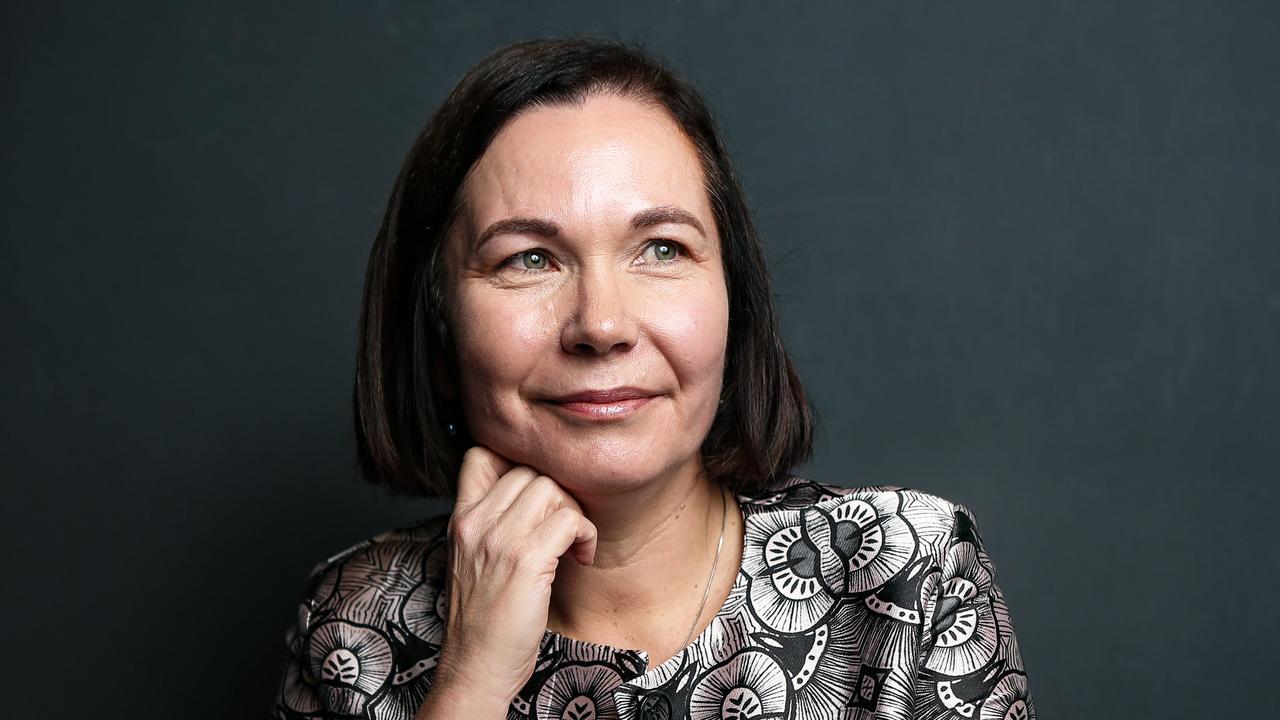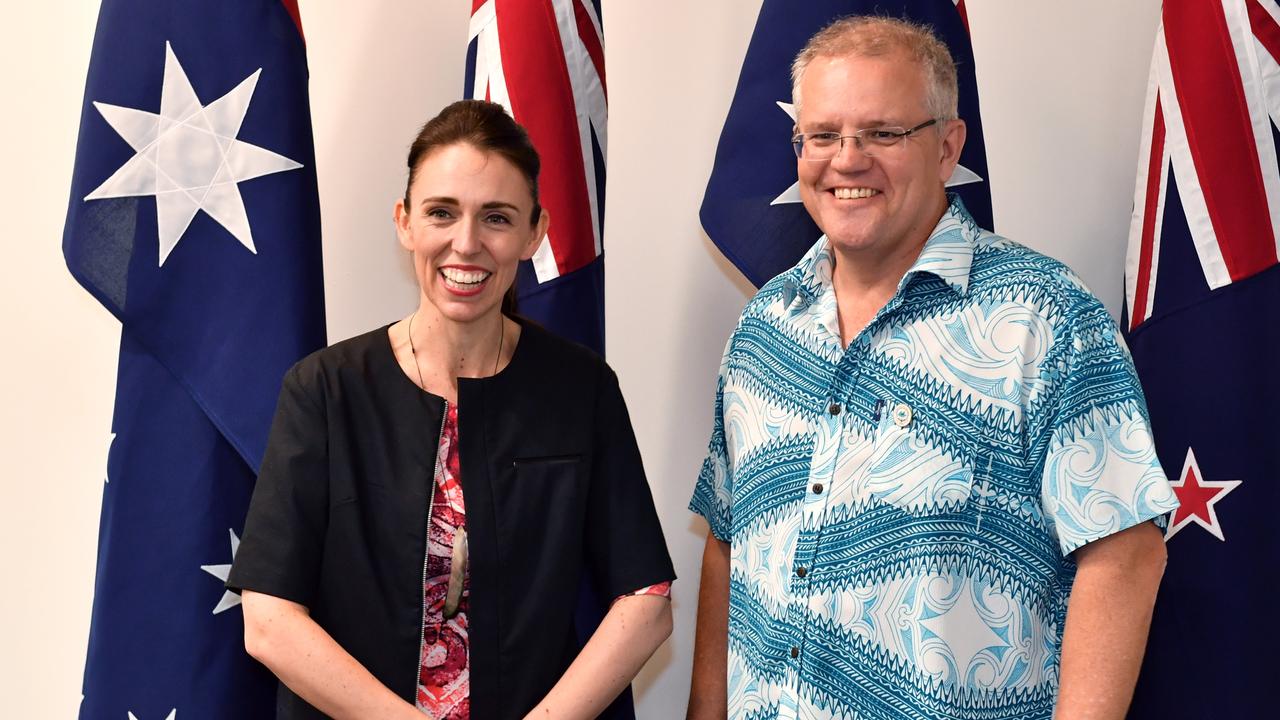IN the ABC television green room before Monday night's Q&A program, Bess Price confessed to apprehension, but told me she was keen to talk about her direct experiences of indigenous disadvantage. And so she did, sharing her support for the Northern Territory intervention with a studio audience and more than 600,000 viewers, making it clear she favours ongoing tough measures to tackle violence and promote education in indigenous communities.
Winding down afterwards, Price was pleased she'd come to Sydney from her home in Alice Springs to make her point. Little did she know that a tasteless tweet aimed at her and her heartfelt views was already circulating.
When I first saw the tweet from indigenous academic Larissa Behrendt - "I watched a show where a guy had sex with a horse and I'm sure it was less offensive than Bess Price" - I assumed it was from a fake account.
It seemed beyond the realms of possibility that someone in her position, who had just taken racial vilification action against Melbourne columnist Andrew Bolt, would broadcast such an insult. As we now know, it was authentic, and Behrendt has to deal with the consequences. But what some would be tempted to dismiss as a sideshow about good manners in public discourse actually provides a window into the challenges of indigenous policy.
Just three years on from the indigenous apology we find ourselves embroiled in a vitriolic debate about disadvantage, racial vilification and the authority to speak on behalf of indigenous communities. The urgent task of closing the gap between indigenous and non-indigenous Australians has been overshadowed by political squabbles.
Q&A host Tony Jones has a long association with these issues, through Lateline's exemplary reporting of indigenous abuse, which substantially contributed to the momentum for the intervention. "The reason we invited Bess on to the program," says Jones, "is that the voices of people like her are seldom heard by a national audience."
At the core of the disagreement between Behrendt and Price is the divide between some of the urban-dwelling, politically activist indigenous leaders who tend to dominate public debate and win political favour, and the indigenous people living in disadvantaged communities who are less interested in politics and symbolism than they are in daily solutions.
Many people will identify with one or other of these groups, or have a foot in both camps, while others will be exceptions to the rule. But it is a divide worth reflecting on.
For much of our history, debate on indigenous issues has had a condescending and simplistic approach to the "indigenous view" - as if an indigenous population of close to 500,000 people stemming from a wide range of cultural backgrounds and living in a vast array of circumstances would share a homogeneous position on any given issue. Certainly most of us now seem to appreciate the healthy diversity of opinions and attitudes, realising no indigenous leader or group is the font of all wisdom. Price's retort that indigenous urban sophisticates, such as Behrendt, are "white blackfellas" is viewed as unfortunate by some. But references to skin colour are shorthand reflections on arguments within the indigenous community about the depth of people's connection to their culture.
In a mature debate we should be able to discuss the frustrations of indigenous people in remote communities seeing grants, preferential employment and accolades going to indigenous people in the city who, as well as their Aboriginality, have strong European heritage.
This was one of the points Bolt made in the pieces that have seen him sued for racial vilification by Behrendt and others.
The underlying historical tension unfolding on our television screens and in the twittersphere is that the symbolic agenda of the urban, political indigenous leaders has been far more successful than practical efforts to end the disadvantage of indigenous people in remote communities.
Since the 1967 referendum recognised the rights of Aborigines and the national responsibility for their welfare, the political wins have been many, from Wave Hill to Mabo to recognition of the so-called Stolen Generations.
Yet despite hundreds of thousands walking across the Harbour Bridge to back reconciliation in 2000, women and children continue to be brutalised in some communities.
Despite the national goodwill at the time of the formal apology, only half as many indigenous children now complete their schooling as non-indigenous children. Despite hyperbolic references to "genocide" when discussing past separation practices, only a third as many indigenous men will live to see 65 years of age compared with non-indigenous men.
The frustration of some indigenous leaders at the political posturing of the urban elites has become palpable.
Indigenous independent Northern Territory MP Alison Anderson has campaigned strongly for tough measures in Alice Springs to overcome rampant violence and abuse, largely attributed to indigenous people. She despairs at the use of the "race card" - a perverse reversal of race politics where opponents of the measures condemn them as racist.
Likewise Price is astounded when the UN special rapporteur on indigenous issues damns the Territory intervention as racist, based largely on criticisms from people in the cities.
Indigenous people living in fear and hopelessness appeal for law and order, education and attention, yet see their cousins in the cities decrying the emergency response because of the stigma it creates. This is not and should not be a battle of political ideology but the Left tends automatically to support the views of the urban activists. The passions and divisions opened up by these disputes can be personal and damaging. I saw this first-hand 15 years ago unpicking the Hindmarsh Island bridge saga.
Some indigenous activists had been recruited into an anti-development campaign and eventually became involved in a fabricated Aboriginal heritage claim. The politics were intense because the Keating government was keen to provide a symbolic victory to the indigenous protagonists. The political indigenous leadership, through ATSIC and other organisations, strongly backed the claims.
The indigenous women who exposed the fabrication were not political and not activists. Their cultural connections to the community were as strong, if not stronger, than the protagonists but they were denigrated, demonised and pushed aside by the activist leadership and the political Left. Only through a royal commission were they able finally to have their stand vindicated.
None of this, of course, is to say the urban, activist indigenous leaders have got it all wrong. But politicians and the rest of us need to seek out and listen to other voices too. Which is one reason the ABC did us all a service by inviting Price on to Q&A. "Bess knows what it is like to live with the threat of violence," says Tony Jones, "and her views resonate strongly with a lot of people."
The effect of those views has already been significant. Stunned by the attitude revealed in Behrendt's tweet, leading activist Marcia Langton in The Australian yesterday wrote about the "city slicker Aborigines with an axe to grind" and even wondered if Bolt "is not right after all".
We could do no better as a nation than to seize on this moment of frank debate. Closing the gap on indigenous disadvantage is clearly the greatest moral challenge of our time, and it cannot be done without the tough measures that some communities want. Julia Gillard and Tony Abbott, in welcome bipartisanship on this issue, should "sit in the dirt" with indigenous people in Alice Springs as soon as possible, and resolve to make this our top priority.
All the better if they can travel there without media, and seek out the views of the women in the background who might not be so vocal but are crucial in holding families together. Is it too much to hope secret plans for this trip are already under way?
Chris Kenny is author of Women's Business: The Story Behind the Hindmarsh Island Affair.



